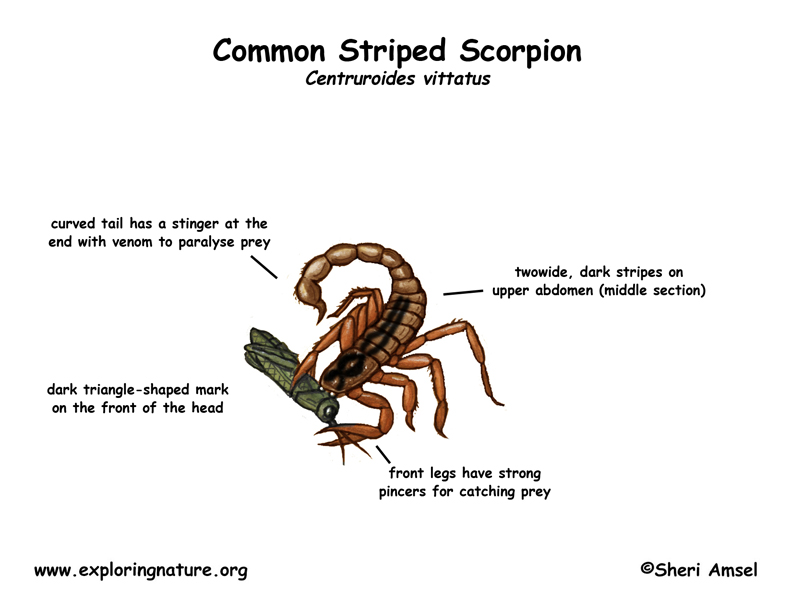

They are found in the U.S. southern states from Tennessee to Colorado, south through Texas and into Mexico. The common striped scorpion is the species found in areas that have scorpions in the U.S.
They are found in cool, damp places, like under logs, rocks crevices, boards and in homes.
They are up to 3" long, yellowish tan with two dark stripes down the top side of the abdomen and dark areas on the head and over the eyes.
They are nocturnal.
They eat mostly insects and other invertebrates (like spiders and centipedes). They catch them, crush them with their large pincers and sting them with their tail stinger. This has a powerful venom that will paralyze them for easier eating.
Females carry up to 50 young (usually less) for 8 months (gestation). After they are born, they perch n their mother's back until their first molt, when they can begin their own lives more safely. they will molt several more times before becoming adults.
Kingdom: Animalia
Phylum: Arthropoda
Subphylum: Chelicerata
Class: Arachnida
Order: Scorpiones
Family: Buthidae
Genus: Centruroides
Species: C. vittatus
When you research information you must cite the reference. Citing for websites is different from citing from books, magazines and periodicals. The style of citing shown here is from the MLA Style Citations (Modern Language Association).
When citing a WEBSITE the general format is as follows.
Author Last Name, First Name(s). "Title: Subtitle of Part of Web Page, if appropriate." Title: Subtitle: Section of Page if appropriate. Sponsoring/Publishing Agency, If Given. Additional significant descriptive information. Date of Electronic Publication or other Date, such as Last Updated. Day Month Year of access < URL >.
Amsel, Sheri. "Scorpion (Common Striped)" Exploring Nature Educational Resource ©2005-2024. December 14, 2024
< http://www.exploringnature.org/db/view/577 >

